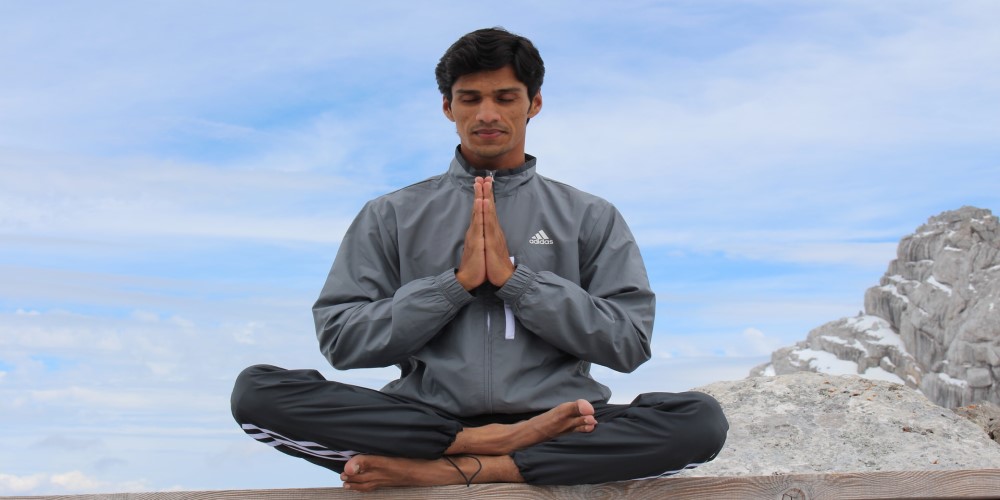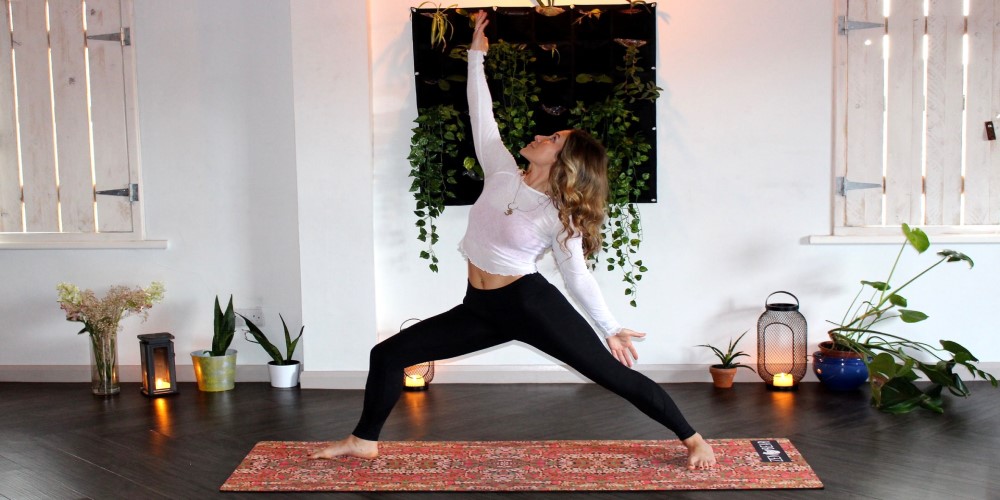What is Hatha Yoga?
Hatha yoga is one of the most commonly practiced types of yoga. It consist of asanas (postures) and pranayama (breathing exercises). The origins of yoga – in all the different styles it is practiced today – lie in Hindu philosophy as the yoke of unbound consciousness. But what is the essence of this ancient Hindu philosophy and what is hatha yoga?
Yoga in Indian Philosophy
Yoga is originally one of the six traditional philosophical schools of India, the six Darśana.
The term yoga is derived from the word “Yuj”, which means yoke (as a means of connecting oxen), union, unity, connection.
Many easter philosophies emphasize a dualistic worldview. This duality appears for example in the male-female qualities, the forces of the sun and the moon, intellect and emotion, subject and object. This duality is united by the practice of yoga.
The main guide to yogic philosophy is the Yoga Sutra of Patanjali, in which the Indian sage compiled the teachings of yoga in four books already about 2000 years ago.
The second sutra reads, “Yoga-chitta-vritti-niródhah” – which can be roughly translated to “Yoga controls the activity and the unsteadiness of the mind”. The word nirodha expresses full restraint as it carries the meaning of closure, repression, discipline, repression, full and exclusive control.
Yoga, then, is the discipline of an undisciplined mind. It is the alignment of body and consciousness.

The Duality of the World in the light of Indian philosophy
According to Indian philosophy, the duality of the world is made up of the pair of purusa (soul, masculine) and prakriti (nature, feminine). Purusa is interpreted as the soul, which is passive, permanent, eternal, contemplative, and unchanging. And prakritit symbolizes an active, creative, material world. The world and its things and phenomena emerged from the connection of the two of them. The liberation of the soul is led by a turn away from prakriti, that is, material, worldly things, which accirding to Indian philosophy can be achieved by meditative practices.
If we understand the duality-based division of our existence under Indian philosophy, meditation and movement practice can help find unity. You can find both in yoga schools, also in hatha yoga.
Yoga ultimately connects the individual spirit (jyvatman) and the universal spirit (paramatman). And a unified vision, a united consciousness, is created. Its aim is to create a unified vision out of duality and to tame the raging consciousness. The signifier of the yoke can be interpreted as taming the unbridled consciousness and subtracting it under the yoke. That we should not be our own enemy, but a cooperating, peaceful companion.
With this approach, not only asanas mean yoga, but you can extend practicing yoga to your everyday life through the connection of consciousness and body. Of course, this requires some basic knowledge first, and this knowledge can be acquired by practicing hatha yoga.
Origins of Hatha Yoga
Hatha Yoga is derived from Raja Yoga, one of the four traditional schools of yoga. It is a simpler version without Yamas and Niyamas (rules for ethical living). Simply put, all yoga poses and pranayama practices can be classified as Hatha yoga. So, if we do any yoga asana or pranayama practice, we are practicing Hatha yoga.
Some teachers say the word Hatha is derived from Ha /sund) + Tha (moon), meaning that Hatha yoga helps to cleanse the solar (pingla) and moon (ida) channels.
Hatha yoga consist of the following elements:
- Asanas – yoga poses to gain control over the body
- Pranayama – breathing techniques to take control of the breath
- Mudra – gestures to manipulate and stimulate pranas (subtle energies)
- Bandhas – body locks to stimulate the chakras (energy centers)
- Kriyas – exercises for cleansing the internal organs
- Mantras – chants to control the mind

The History of Hatha Yoga
Around the beginning of the 15th century, yogis from the Natha tradition were impatient and began practicing asanas before mastering Yama and Niyamas. But since the mind was not ready for further practice, they had to work harder. They called it their “forcefull” (hatha in sanskrit) yoga practice. These Natha yogis practiced the asanas until they mastered them.
This way of practicing Raja Yoga, not following the strict order of first mastering Yamas and Niyamas, was called “Hatha Yoga”.
Swami Swatmarama, a 15th century sage, put together the Hatha Yoga Pradipika and briefly described the six parts of yoga to reach samadhi (the deepest meditative state) without other long conscious-raising process. Hatha yoga is also known as Shadanga yoga (six limbed yoga).
Swami Swatmarama advised to start with physical exercises first because it will be easier for most people to master the mind through the body than to cleanse their character, habits and mind directly by observing Yamas and Niyamas.
Hatha yoga, therefore, focuses primarily on cleansing the body as a path leading to the purification of the mind. The cleansing of the body and mind is also essential for health. Being healthy and maintaining health is a central goal of yoga because only when you are healthy you have the best means for your further spiritual development.
The Six Limbs of Hatha Yoga
- Asana – a constant, comfortable state of body and mind
- Pranayama – expanding the ability to retain prana
- Pratyahara – the withdrawal of the senses
- Dharana – concentration of the mind
- Dhyana – meditation
- Samadhi – the highest state of meditation and wisdom
The Rise of Hatha Yoga
In ancient times, hatha yoga was considered a secret and sacred practice. Primarily, the monks could learn and practice. Therefore, ordinary people thought it was some kind of secret magic. There are many mystical stories about yoga practitioners.
Hatha yoga became popular in India in the 15th century when monks began presenting asanas at public events. But it came to the fore when British photographers published photographs of practicing yogis in Western magazines in the late 19th century.
This intrigued the intellectual seekers of the West and boosted growing interest in mystical Eastern practices. Many Westerners visited India to learn yoga and meditation. But the popularity of yoga gained real momentum when some masters visited the West and taught these yoga asanas to their Western students in the 20th centuries.
Teachers like Indra Devi, BKS Iyengar published books that were sold in millions, making hatha yoga available for the masses.
Physical and Mental Benefits
As we know, practicing yoga has many positive effects. Not only on the physical but also on the conscious level.
Physical benefits of practicing hatha yoga:
Improves joint relaxation.
Improves the elasticity of connective tissue.
Stimulates metabolism and improves blood flow.
Stimulates cell recovery and regeneration.
Helps stimulate the lymphatic system and cleanses the body.
Improves the general range of motion of the body.
Improves energy levels.
Improves lung and heart function.
Creates a balance of the sympathetic and parasympathetic nervous systems.
Mental benefits of practicing hatha yoga:
Helps soothe the senses.
Helps improve concentration and sharpens focus.
Brings balance to emotions.
Relieves anxiety and depression.
It removes mental fatigue.
Stimulates creativity.
It stimulates learning opportunities.
As you can see, there are only positive benefits to practicing yoga – which can be one of the cornerstones of creating a healthy lifestyle. If you want to try Hatha yoga yourself, try out one of the best yoga studios in Budapest – you can take online classes or take classes in person once the studios are open again.
Adapted from “Mi a hatha jóga?”/ Viktoria Gazda on yogayogi.hu
 English
English magyar
magyar